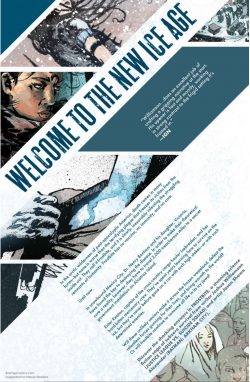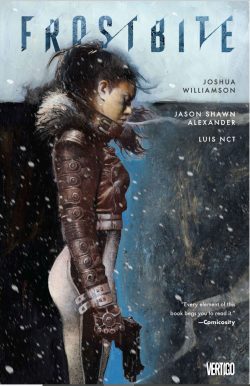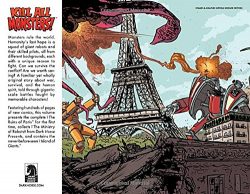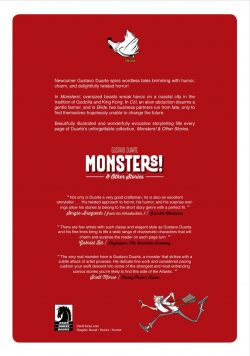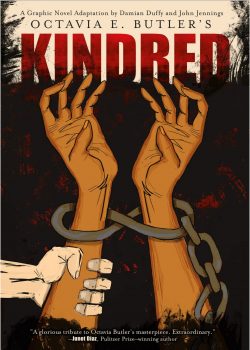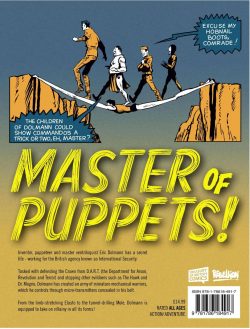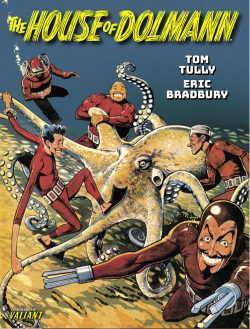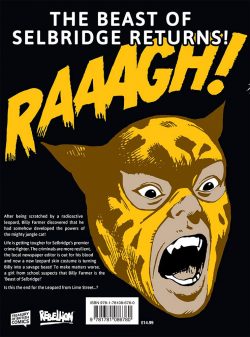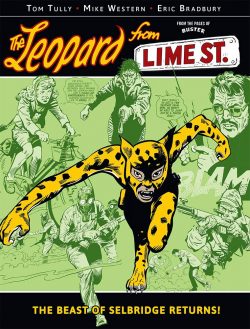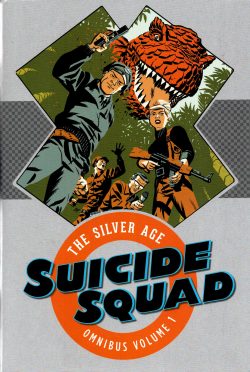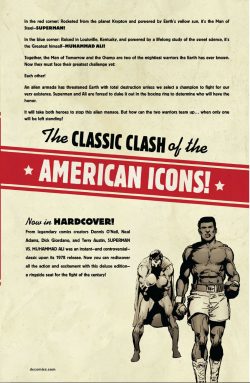
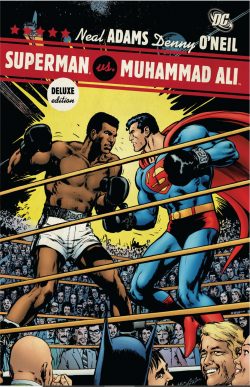
By Neal Adams, Denny O’Neil, Dick Giordano, Terry Austin, Gaspar Saladino & various (DC Comics)
ISBN: 978-1-4012-2841-5 (HB/Digital edition)
It’s a fact (if such mythological concepts still exist): the American comic book industry would be utterly unrecognisable without the invention of Superman. His unprecedented adoption by a desperate and joy-starved generation quite literally created a genre if not art form.
Within three years of his June 1938 debut, the intoxicating blend of eye-popping action and social wish-fulfilment which hallmarked the early Man of Steel had grown to encompass cops-and-robbers crime-busting, socially reforming dramas, science fiction, fantasy, whimsical comedy and – once the war in Europe and the East embroiled America – patriotic relevance.
If only in comic book terms, Superman is master of the world, having utterly changed the shape of a fledgling industry and entertainment in general. There have been newspaper strips, radio and TV shows, cartoons, games, toys, apparel, merchandise and blockbusting movies. Everyone on Earth gets a picture in their head when they hear the name.
Another icon – a magnificently human one – was a sporting legend who became a paragon of black liberation and human equality, as well as global symbol of power, endurance and dignity. He was an American prizefighter who started life as Cassius Marcellus Clay Jr., before finding his true name and purpose…
Born in Louisville, Kentucky on January 17th 1942 – so, technically, also a son of the Golden Age – Clay began boxing at age 12. He won titles and acclaim – and later notoriety – not simply for his incredible sporting achievements but for his quick wits, cultural savvy and moral standing. Gold medal Olympian, World heavyweight champion, critic, pundit and street poet, in 1966 Clay took on the American government and paid a high personal price for refusing to fight a white man’s war in Vietnam.
A forceful lifetime advocate of equal rights, in 1964, the Conscientious Objector had converted to Islam and formally renounced his “slave name”, adopting new appellation Muhammad Ali. A living symbol of black pride during the Civil Rights era, Ali retired from boxing in 1981, concentrating on commercial, social, political and philanthropic works. He was declared Sportsman and Sports Personality of the (20th) Century by Sports Illustrated and the BBC respectively, and died in June 2016 from complications associated with Parkinson’s disease.
As part of his campaign to draw attention to his causes, in 1977 “The Greatest” agreed to a headline-grabbing exhibition bout with the “World’s Greatest Superhero” which was released in January 1978 in the flashy, oversized tabloid iteration that was the decade’s equivalent of today’s prestige print formats. Originally published as All-New Collectors’ Edition volume 7, #C-56, the project was very much the baby of another phenomenon of the era…
Neal Adams was born on Governors Island, New York City, on June 15th 1941. His family were career military and he grew up on bases across the world. In the late 1950s, Adams studied at the High School of Industrial art in Manhattan, graduating in 1959.
As the turbulent, revolutionary 1960s opened, the illustrator had worked in advertising and ghosted some newspaper strips whilst trying to break into comics. In pursuing a commercial art career – advertising and “real art” – he did some comics pages for Joe Simon at Archie Comics (The Fly and that red-headed kid too) before becoming one of the youngest artists to co-create and illustrate a major licensed newspaper strip: Ben Casey, based on a popular TV medical drama series. His first attempts to find work at DC were not successful…
That comic book fascination never faded, however, and as the sixties progressed Adams drifted back to National/DC, working on covers as inker or penciller. After “breaking in” via anthological war comics, he eventually found himself at the vanguard of a revolution in pictorial storytelling, much of it with similarly socially-inclined writer Denny- O’Neil (with whom he had spearheaded an age of “relevancy” in Green Lantern/Green Arrow)…
As well as a comics iconoclast, Adams was a tireless social activist and campaigner. His mission as champion of creators rights even finally secured some long-ignored liberties and rewards for the formerly invisible stars of comic books like Jerry Seigel & Joe Shuster…
For the high-profile Superman vs Muhammad Ali project – immortalised here in a splendidly oversized (187 x 283 mm) commemorative Deluxe collection – Adams even latterly assumed much of the writing thanks to his affinity for the stars and the subject. He also gets in the first word in his ‘Introduction’ before the saga begins…
As well as worthy and well-intentioned, the bombastic saga is also intoxicatingly exciting and well-executed: a classic invasion tale that finds the Man of Steel helpless before an encircling alien armada pointing appalling weapons at the world. Unable to counter the overwhelming force determined to eradicate or enslave troublesome humanity before they become a threat to all the civilised species of the universe, Superman must play a more devious game…
The Scrubb are a warrior race demanding Earth provide a representative champion to fight a single-combat duel as the means of determining the fate of their species. Forced to play the game by the rules of Scrubb leader Rat’Lar, Superman assumes he will fight for Earth, but is challenged by new friend Muhammad Ali who quite reasonably points out that the hero is only an adopted earthman, even as he shares a few fight tips in ‘Training’…
The fight to be the challenger is also manipulated by Rat’Lar, who broadcasts the event across the galaxies to cow and intimidate rival civilisations. The emperor makes great capital of the ‘Preliminary’ bout with the de-powered Kryptonian batting valiantly but in vain against the kid from Kentucky.
The result was never in doubt. Without powers, Superman could never handle Ali, and soon the grievously beaten superhero is stretchered out of the ring, leaving the boxer to face Scrubb champion Hun’Ya in the ‘Main Event’…
Exactly as Superman and Ali had planned…
Culminating in a battle of wits and blockbusting demonstration of human and superhuman brawn, this cathartic revel was never about showing whose hero is best, but how underdogs working together can defeat any opposition, even nasty aliens who have no intention of acting in good faith or fighting with honour…
Spectacular hokum, magnificently rendered, this is a treat for the eyes and endlessly re-readable, and this Deluxe tome enhances the visceral fun with loads of extras such as the original wraparound cover, and a ‘Seating Chart’ for the dozens of ringside celebrities Adams added to it plus some candid behind-the-scenes revelations in an ‘Afterword’ from then-DC publisher Jenette Khan. Moreover, art fans and history-buffs can delight in a selection of pencil page layouts and roughs in a copious ‘Sketches’ section, which includes script pages and creator ‘Bios’.
Fast, furious, enthralling and extremely rousing, Superman vs Muhammad Ali celebrates a classic moment of comics history: one that is endlessly appealing and rewarding, and one no fan should be without.
© 1978, 2010 DC Comics. All Rights Reserved. Muhammad Ali and all associated marks are trademarks of Muhammad Ali Enterprises LLC © MAE LLC. All Rights Reserved.





